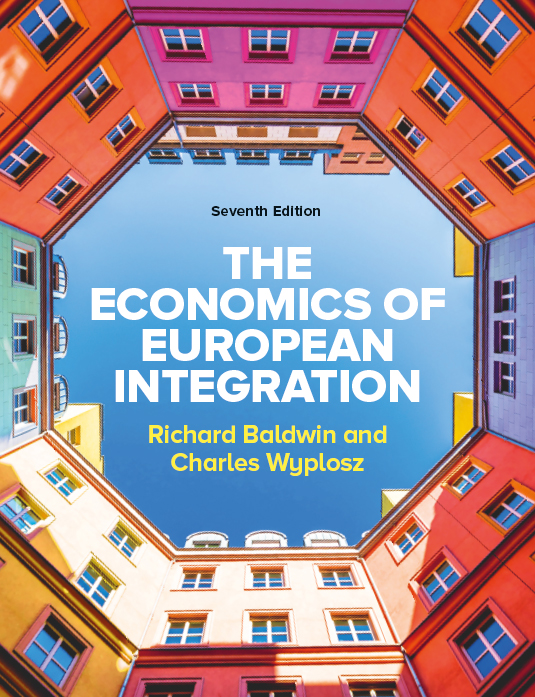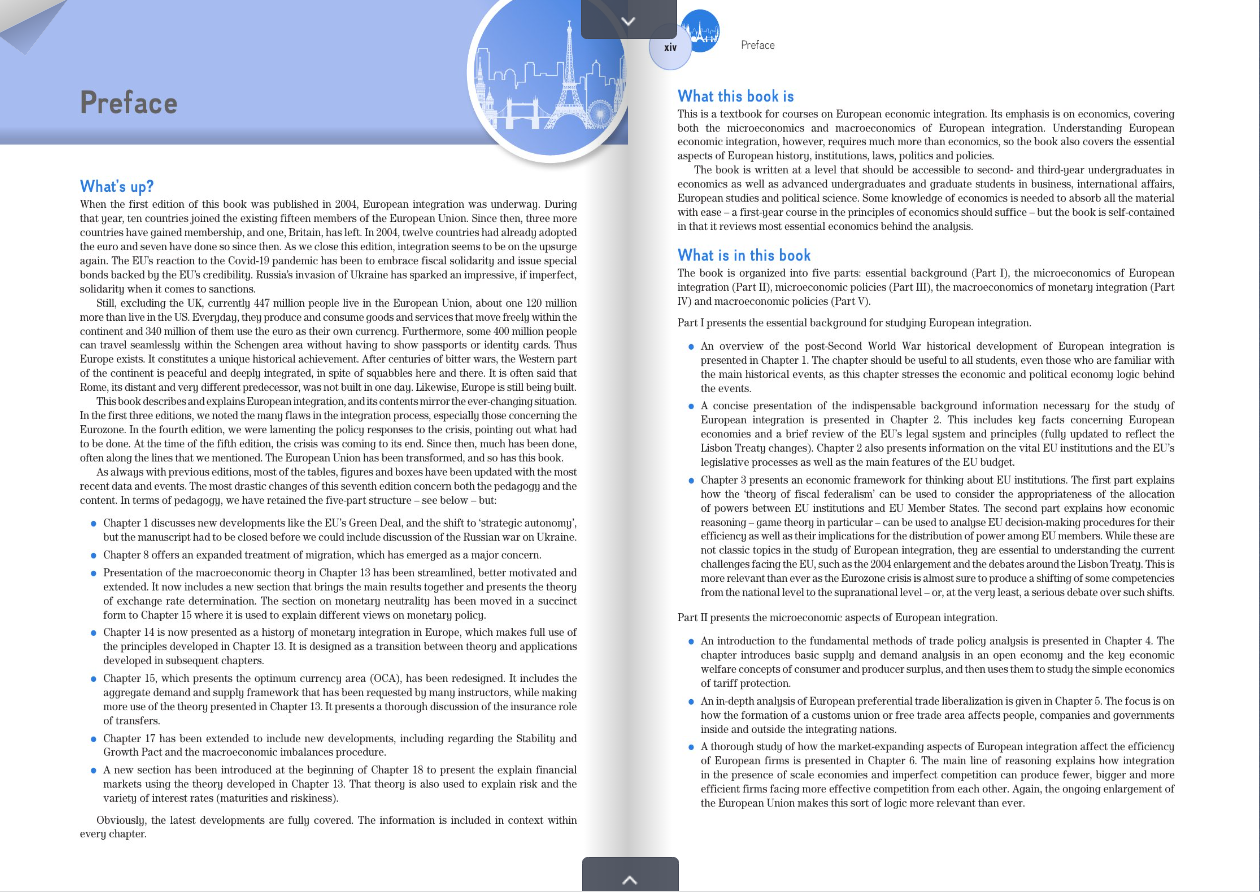The Economics of European Integration, 7th Edition
Richard Baldwin, Charles Wyplosz
Print: 9781526849434/ Ebook: 9781526849441
With the new 7th edition, Richard Baldwin and Charles Wyplosz continue to provide students with an accessible presentation of the facts, theories and controversies that are driving rapid change at the heart of Europe, with crucial updates on the impact of the climate crisis, Brexit and Covid-19 and expert analysis of the contemporary status of integration within the European Union.
Economics of European Integration covers both the microeconomics and macroeconomics of European integration. However it also presents essential background, covering aspects of European history, institutions, laws, politics and policies, to help students develop a deeper understanding of the context.
The book is written at a level that should be accessible to second- and third-year undergraduates in economics as well as advanced undergraduates and graduate students in business, international affairs, European studies and political science. Some knowledge of economics is needed to absorb all the material with ease – a first-year course in the principles of economics should suffice – but the book is self-contained in that it reviews most essential economics behind the analysis.


What's new?
Bringing it up-to-date
The latest data, developments and events, including new discussions and examples such as the new budget which has significant implications on European bonds, immigration, and climate change.
Next Gen EU
With the EU adapting to big changes in the wider global context, the new edition discusses developments like the EU’s Green Deal and how it is evolving the purpose of the union, and the shift to ‘strategic autonomy.’
Factors deepening integration
New chapters highlighting the impact of both Brexit and Covid-19 on the EU. The way in which the EU has responded to crises with greater cooperation and deepening integration is a major theme in the book.
About the authors
Richard Baldwin
Richard Baldwin is Professor of International Economics at the Graduate Institute, Geneva since 1991, a part-time visiting research professor at the University of Oxford from 2012 to 2015, Director/President of CEPR from 2014 to 2018, and Editor-in-Chief of Vox since he founded it in June 2007. He was Co-managing Editor of the journal Economic Policy from 2000 to 2005, Policy Director of CEPR from 2006 to 2017, and Programme Director of CEPR’s International Trade programme from 1991 to 2001. He has previously been a Senior Staff Economist for the President’s Council of Economic Advisors in the Bush Administration (1990–1991), on leave from Columbia University Business School where he was Associate Professor. He did his PhD in economics at MIT with Paul Krugman and has collaborated with him on several occasions. He was visiting professor at MIT in 2002/03 and has taught at universities in Australia, Italy, Germany and Norway. He has also worked as consultant for the numerous governments, the Asian Development Bank, the European Commission, OECD, World Bank, EFTA and USAID. The author of numerous books and articles, his research interests include international trade, globalization, regionalism and European integration.
Charles Wyplosz
Charles Wyplosz is Professor Emeritus of International Economics at the Graduate Institute in Geneva where he also served as Director of the International Centre for Money and Banking Studies. Previously, he has taught at INSEAD and at L’École des hautes études en sciences sociales in Paris. He is a Fellow of CEPR and of the European Economic Association. His main research areas include financial crises, European monetary integration, fiscal policy and regional monetary integration. He is the co-author (with Michael Burda) of the leading textbook Macroeconomics, A European View and has published several books and many professional articles. He serves as consultant to many international organizations and governments and is a frequent contributor to public media. He was a Founding Managing Editor of Economic Policy. A French national, Charles Wyplosz holds degrees in Engineering and in Statistics from Paris and a PhD in Economics from Harvard University.
Request a review copy
To access a digital version of your Review Copy please complete the form below and we'll make the title available for you on our partner website - VitalSource - when it becomes available (in late August). If you are requesting a physical sample please provide us with your preferred delivery address in the free text box.

